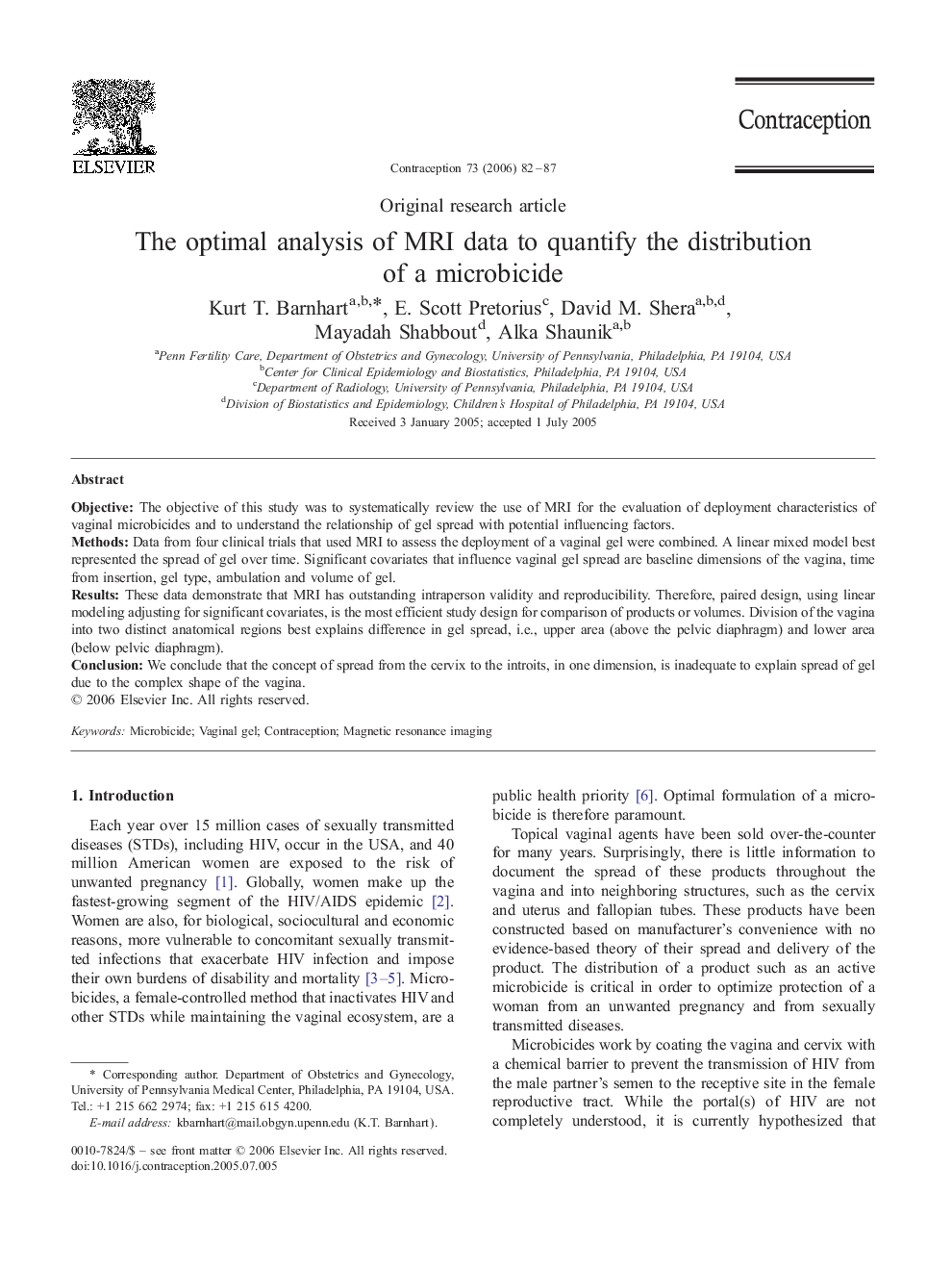| Article ID | Journal | Published Year | Pages | File Type |
|---|---|---|---|---|
| 3916249 | Contraception | 2006 | 6 Pages |
ObjectiveThe objective of this study was to systematically review the use of MRI for the evaluation of deployment characteristics of vaginal microbicides and to understand the relationship of gel spread with potential influencing factors.MethodsData from four clinical trials that used MRI to assess the deployment of a vaginal gel were combined. A linear mixed model best represented the spread of gel over time. Significant covariates that influence vaginal gel spread are baseline dimensions of the vagina, time from insertion, gel type, ambulation and volume of gel.ResultsThese data demonstrate that MRI has outstanding intraperson validity and reproducibility. Therefore, paired design, using linear modeling adjusting for significant covariates, is the most efficient study design for comparison of products or volumes. Division of the vagina into two distinct anatomical regions best explains difference in gel spread, i.e., upper area (above the pelvic diaphragm) and lower area (below pelvic diaphragm).ConclusionWe conclude that the concept of spread from the cervix to the introits, in one dimension, is inadequate to explain spread of gel due to the complex shape of the vagina.
